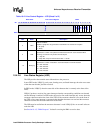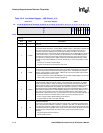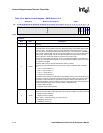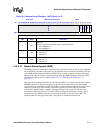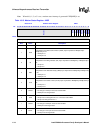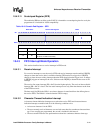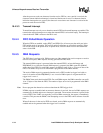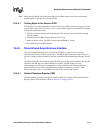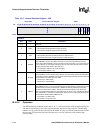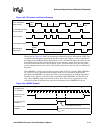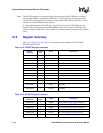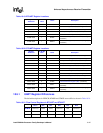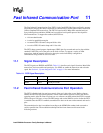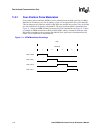
Intel® PXA26x Processor Family Developer’s Manual 10-23
Universal Asynchronous Receiver/Transmitter
Note: Ensure that the DMAC has finished previous receive DMA requests before the error interrupt
handler begins to clear the errors from the FIFO.
10.4.5.1 Trailing Bytes in the Receive FIFO
Trailing bytes occur when the number of entries in the receive FIFO is less than its trigger level and
no more data is being received. In such a case, a receive DMA request is not generated. To read the
trailing bytes follow these steps:
1. Wait for a character timeout indication interrupt. The character timeout indication interrupt
must be enabled.
2. Disable the receive DMA channel and wait for it to stop.
3. Read one byte at a time. The FIFO is empty when LSR[DR] is cleared.
4. Re-enable the receive DMA channel.
10.4.6 Slow Infrared Asynchronous Interface
The slow infrared (SIR) interface is used with the STUART to support two-way wireless
communication that uses infrared transmission. The SIR provides a transmit encoder and receive
decoder to support a physical link that conforms to the IrDA Serial Infrared Specification Version
1.1.
The SIR interface does not contain the actual IR LED driver or the receiver amplifier. The I/O pins
attached to the SIR only have digital CMOS level signals. The SIR supports two-way
communication, but full duplex communication is not possible because reflections from the
transmit LED enter the receiver. The SIR interface supports frequencies up to 115.2 Kbps.
Because the input clock is 14.7456 MHz, the baud divisor must be eight or more.
10.4.6.1 Infrared Selection Register (ISR)
The IrDA module is managed through the UART to which it is attached. The Infrared Selection
Register controls IrDA functions (shown in Table 10-17 on page 10-24).



